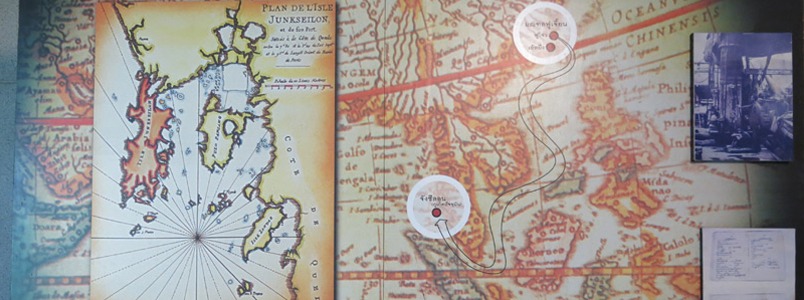


Until the 1980s, Phuket Island painted a much different picture than the tourist magnet it is today. In the 17th century, tinstone — the principle ore of tin — was discovered in large, easily extracted quantities. Tin was in huge demand because of the industrial revolution happening in the west, and the island drew in thousands of Chinese labourers, who settled here and became Phuket's first generation serious entrepreneurs — today the wealthiest segment of Phuket society.
Around 200 pits and manmade lakes scarred the landscape and huge dredgers scoured the surrounding sea beds. You can see what the conditions were like back then by visiting the Kathu Mining Museum, located on the same road as the British International School. Mining ceased in the early 1990s, but the evidence is still there today — although much easier on the eye thanks, in large part, to resort landscapers, who have managed to turn Phuket's greatest eyesores into 'water features' around which are built some of the island's most desirable property developments, resorts and golf courses.
Another significant influence on Phuket's landscape was the rubber industry, which kicked off around the beginning of the 20th century. Rubber seedlings were smuggled out of Brazil and, today, Thailand is one of the three major rubber producers in the world, while Brazil produces no significant quantities. Large swathes of Phuket's countryside are still dominated today by rubber plantations.
Ironically, back in those days, the cheapest land on Phuket was beachside — because it had no commercial use. Many a local Phuket family has made a fortune out of this 'worthless' land, which was all they could afford back in Phuket's industrial heyday. Back then the big money was on the rubber plantations and ore-rich land of the interior.
Multicultural Phuket
Each commercial 'revolution' has influenced Phuket's culture and the island has hung on to a colourful mixture of residents, as many a family stayed on and made Phuket its home. Evidence of this can be seen in the island's architecture, especially around Old Phuket Town, where Sino-Portuguese influences are apparent on every street corner.
The people of Phuket are southern Thai Muslim, Chinese Thai, indigenous southern Thai Buddhists and, with the tourism boom, Thais from just about every corner of Thailand. You'll find people speaking Laos (the language of Thailand's northeast), Pak Neua (the language of the north), Pak Kan (central Thailand and what we know as 'Thai'), Pak Tai (south Thailand) and Chinese. Fortunately, all Thais speak Pak Kan so life is not too complicated...
Articles & Profiles of Interest:
A History of Phuket
Phuket's Old Town Renaissance
Old Phuket Town
Phuket Museums: Kitschy Time Trip
Kathu Mining Museum
Thai Hua Museum
Phuket's Sapan Hin Mining Monument
Back to Phuket Island page
© Image Asia Events Co., Ltd. Content provided courtesy of IMAGE asia.
